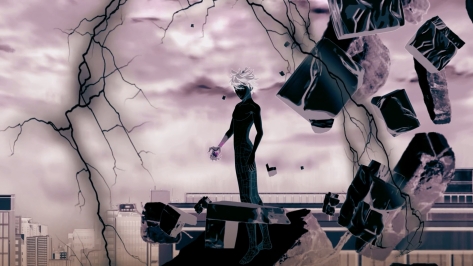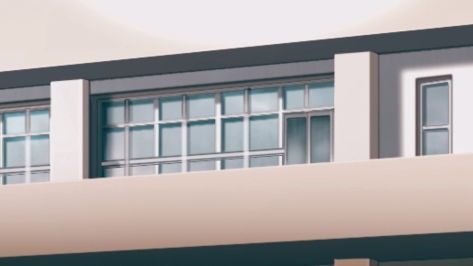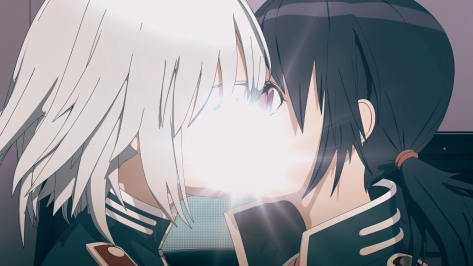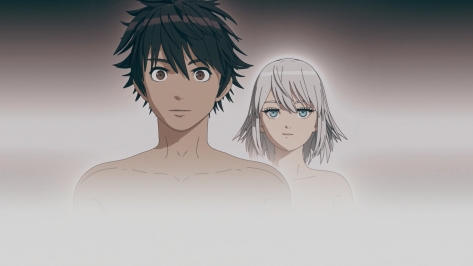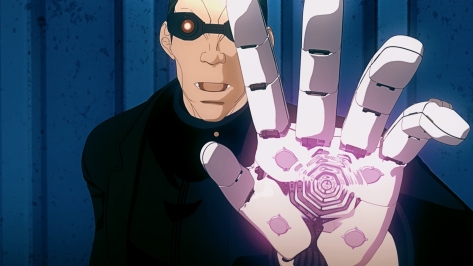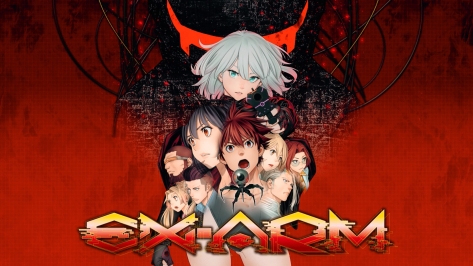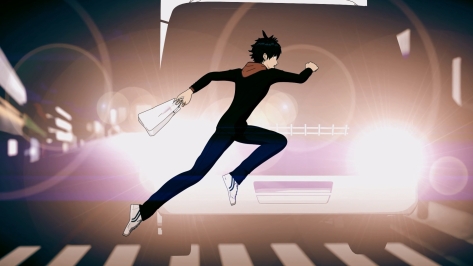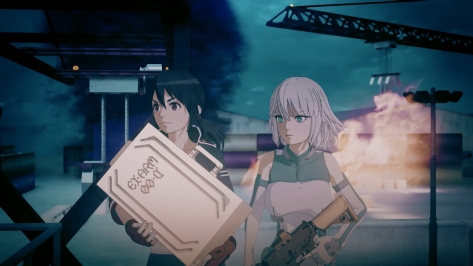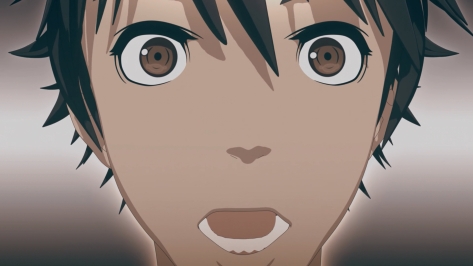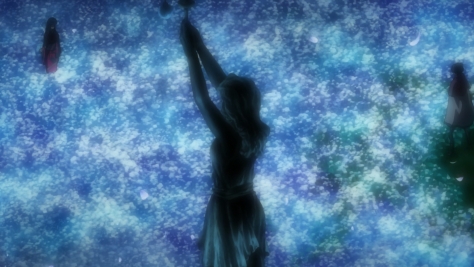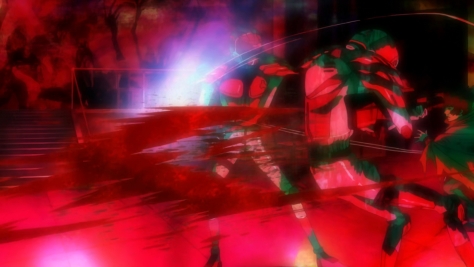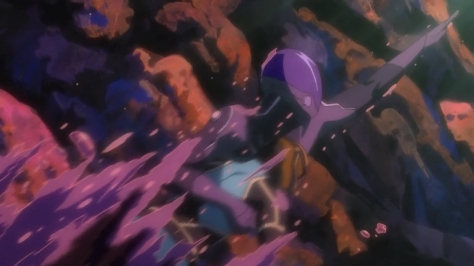Japanese Title: Ex-Arm
Similar: Ghost in the Shell
Watched in: Japanese
Genre: Action Science Fiction
Length: 12 episodes
Positives:
- Nothing
Negatives:
- Ugliest anime ever?
- Incompetent script
- The directing is terrible
- Doesn’t even know how to use CG properly
(Request an anime for review here.)
And so we come to the 30th review of the past 30 (+2) days. I saved the best for last. Ex-Arm is a thing of beauty, an art piece of wonder so spectacular it defies reality. Physics hold no power over Ex-Arm.
CG anime is often terrible with bad writing to match. However, the recent triumph of Beastars and Dorohedoro seemed to turn a real corner for CG in this medium. Then comes Ex-Arm to set the industry back three decades. The story behind this disaster is even worse than the resulting product itself. I don’t know where to begin with this. There are so many things wrong with the art alone that I want to say them all at once. I can’t decide which is the worst!
What about the opening scene? It actually starts with 2D animation – well, I say animation, but can you call two frames flitting back and forth as characters drag across the screen “animation”? Then they have a shot of a character surrounded by lightning as the world tears apart. The still image below is almost as animated as the video. Only the lightning moves as this guy holds the sort of pose some weeaboo would post a photo of themselves imitating on Twitter with the caption, “Cross me and the devil comes out to play,” serious about it. They are so proud of this shot. Expect to see it several dozen times across the 12 episodes. Snap cut to the opening sequence.
Now, anime openings are known for being of high quality, sometimes even deceptive of the anime’s actual quality. I think Ex-Arm’s OP may be worse than the series. The highlights are character profile shots of the typical OP, but they have no animation. A rotating 3D model of the characters shows up instead. Boy, are they proud of those models. They want you to see them in all their glory to get you excited for what is to come. That’s what an OP is for, right? We also bear witness to the fire effects, which look pasted in by a fan edit.
Once the OP ends, we establish the setting at a Japanese high school and at this point, I think they must be trolling us. They do something I never thought someone would even consider. I want you to imagine what a camera zoom looks like. The camera starts at a distance and zooms in on the subject, bringing the detail closer to the eye. Sounds accurate. What it doesn’t do is blow up the image. Ex-Arm though, in its avant-garde genius, does blow up the image as if zooming in Photoshop, to the point where you can see the pixilation. Funniest moment of the entire series! Don’t believe me? Look at the image below and keep in mind it is full HD 1080p.
The comedy doesn’t end there. Classroom interior, protagonist sitting bored at his desk in glorious CG. Enter two classmates – in 2D! I couldn’t stop laughing. Ex-Arm can’t even remain visually consistent. This isn’t the only instance either. Flat characters pop up at random throughout the series and the protagonist’s brother is 2D as well, for some reason that I’m sure is beyond the understanding of my puny brain. (The classmates stop animating halfway in the scene, by the way.)
We’re less than three minutes in and every artistic decision is the wrong one. Soon after, the first action scene enters the fray and removes any hope of value in Ex-Arm. When the police android kicks a guy in the head, it has the impact of a pillow fight. There is no recoil, no weight, no mass to anything, most noticeably in action scenes, and the woman doesn’t move that fast (I’m sure she’s meant to), yet dodges a thousand bullets out in the open. The director claims they used motion capture for Ex-Arm, but I don’t believe it. No way. This cannot be motion-captured animation. Perhaps it was, before the incompetent animators “improved” it in post.
Imagine being the poor bastard who wrote the source material seeing this result. Only something like Redo of Healer would be improved by such visuals.
Who made this atrocity, you might be wondering. This Crunchyroll original comes from new studio Visual Flight, made up of what seems like a team with little animation experience. Most come from the live action space. The director, Yoshikatsu Kimura, equated the logic that because live action is done in the real world – a 3D space – he is fit for a 3D anime. Furthermore, he brought on his usual crew from live action work, not experienced anime workers. I promise you they have never heard of animation ramping. Yes, the production committee is responsible for hiring him, but this clown made every wrong decision from start to finish. Can you believe this anime’s trailer has the line, “Declaring war against all SF (science fiction) series around the world!”?
You’d think that with a live action director, it would at least have good cinematography and directing. Perhaps it looks terrible in CG, but you can imagine how it would have looked great if done in live action. Nope, it would still be miserable. Interviews with him tell all you need to know about how doomed Ex-Arm was before it started.
They couldn’t even get the key visuals right. Look at this crap below, also used as the static ED:
I haven’t even covered the story yet. It follows high school student Akira, who meets with Truck-kun one day and wakes up years later as a brain inside an electronic briefcase. Inhabiting an android proxy, he fights against terrorists alongside a special police force.
The story sucks. It’s not as bad as the visuals, though it doesn’t elevate the piece an iota. The script is the worst aspect in terms of story, riddled with cliché – particularly of the fan service variety – and like the animation, has no weight. Just vapid. There are much worse anime stories out there, yet it has no positives. On an audio front, some of these voice actors are far too good for this, while others, such as the villains, deliver bad performances though it may not be their fault on such a project. Wait until you see the accompanying mouth animations.
I am baffled at Ex-Arm’s existence. Self-awareness seemed to have flown out the window in the making of this disaster.
Overall Quality – Very Low
Recommendation: Must be seen to be believed. Ex-Arm’s handling of CG is so incompetent that words cannot do it justice.
(Request reviews here. Find out more about the rating system here.)
Awards: (hover over each award to see descriptions; click award for more recipients)
Positive: None
Negative:

